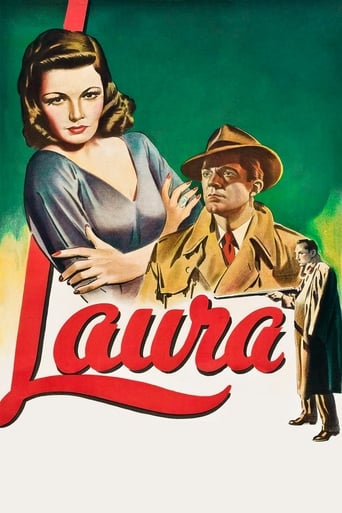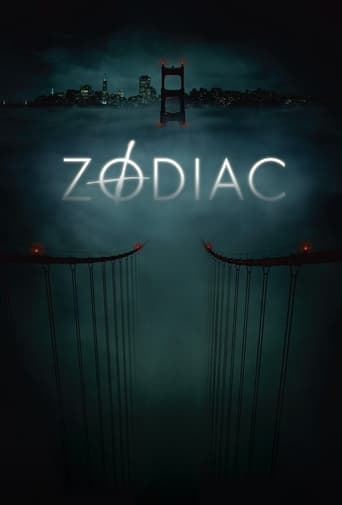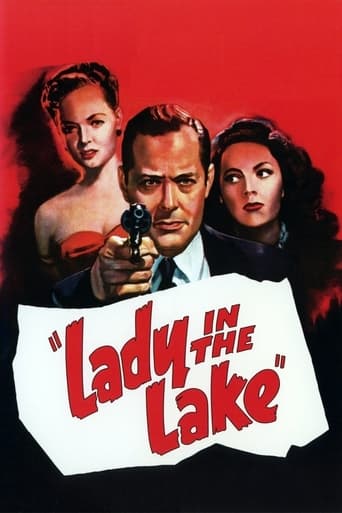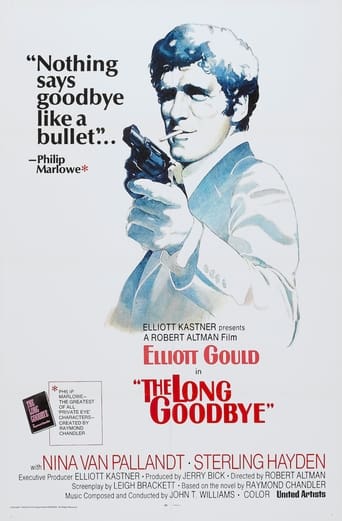

The House with Laughing Windows (1976)
A young restorer is commissioned to save a fresco representing the suffering of St. Sebastiano, which was painted on the wall of a local church by a mysterious, long-dead artist.
Watch Trailer
Cast


Similar titles
Reviews
Save your money for something good and enjoyable
The story, direction, characters, and writing/dialogue is akin to taking a tranquilizer shot to the neck, but everything else was so well done.
It's funny, it's tense, it features two great performances from two actors and the director expertly creates a web of odd tension where you actually don't know what is happening for the majority of the run time.
This is one of the best movies I’ve seen in a very long time. You have to go and see this on the big screen.
Best part of the movie is the locations and the cinematography. They are not great but that's the best thing I could find. There's a scene where someone is getting kicked out of the only restaurant in the town. That was handled well. Besides this, the film is boring.The lead actor is boring, no charisma. He goes to an island or isolated town to fix or repair an ugly disgusting painting. Hooks up with an older teacher/prostitute, speaks with the town folk, all strange, something to hide, then he hooks up with a hot young replacement teacher. What luck! A few people die, the mystery is revealed that the dead artist's sisters are trying to preserve the artists corps, and killing people. The whole town is in on it. And the priest that commissioned the restoration, is, wait for it, one of the sisters, who undresses and for our trouble to sit through this slow paced boring nonsense, we get a flash of one tit. Great stuff.So, depending on what you call art, you may actually like this. I didn't. I found the beginning interesting, and then the boredom of the lead character was all over the place. This movie sucks.What's the story with the recorder plug bursting on fire, house fuse blows, then the recorder turns on by itself? Is this supposed to be supernatural, or was it just a stupid gimmick? I say just plain stupid.Snails in the refrigerator! Is that supposed to be gross, or strange? Someone actually thought it was cool to put that in the film.Here's some advice to aspiring directors and producers: If you try to show a genius artists work in your films, make sure the art that is shown is not some 3rd rate cartoon amateur garbage like the ones shown in this film. It just goes to the discredit of the artist character, and to the film makers to present such garbage. People who love this garbage may need to see more films. If you believe it's a cult film, maybe you should think about joining the same garbage witches cult that Argento started in Suspiria, another crappy amateur piece of crap, along with Four Flies, Plumage and anything else Argento has directed. Here are a few films I will recommend: Don't Torture a Duckling, Messiah of Evil, White Zombie, Footprints on the Moon, Scream Bloody Murder. Some movies with actual stories, and people who care to present them. Rating is an F, 1 star.
Not quite a pure giallo (it has giallo influences all over it, but strays into Don't Look Now and The Wicker Man territory too in terms of themes and structure), The House With Laughing Windows is a generally absorbing thriller directed by Pupi Avati which builds slowly and tensely to a stunning climactic twist.In a small and secretive Italian community, artist Stefano (Lino Capolicchio) arrives to restore a damaged fresco on a church wall. The fresco shows the gruesome slaughter of Saint Sebastian by two women, maniacally grinning as they plunge knives into his naked torso. The artist who originally began working on the fresco was called Buono Legnani, and Stefano soon discovers that the long-deceased Legnani was a very unstable and twisted individual. His speciality was producing paintings about pain and death – it was his obsession, the thing that excited him above everything else. Bit by bit, Stefano pieces together the shameful secrets of the community, uncovering disturbing rumours about Legnani and his two diabolical sisters. Among the rumours are reports that they used real-life sacrificial victims as 'models' to make Legnani's paintings more authentic-looking. Stefano ends up staying at a creepy mansion on the edge of the village where the only permanent inhabitant is a bed-bound old lady. Here, he is joined by a beautiful young teacher, Francesca (Francesca Marciano), another newcomer to the village with whom he soon falls in love. Events become increasingly terrifying and mysterious for the lovers, until all is revealed in a blood-soaked finalé.Avati's film is beautifully shot, building towards its climax with a sense of gnawing dread. It's a particularly slow-burning style of film – possibly too slow for viewers who like the action and bloodthirstiness to come thick and fast – but for those willing to adjust to the pace, the build-up pays off handsomely come the end. Performance-wise, The House With Laughing Windows is definitely a notch up from many Italian giallo entries of the era. Everyone registers well, generating just the right balance of fearful paranoia or tight-lipped suspicion depending on which side of the mystery their loyalties lie. Amedeo Tommasi's score is disappointingly weak, adding little to the suspense and, in some cases, even lessening the terror by being pitched at too jolly and jaunty a level. Avati just about gets away with this thanks to his atmospheric set-up of scenes and shadowy lighting, which always hints at unseen danger behind every door. A few plot holes also crop up along the way – the most significant being the lack of an explanation as to why the entire community feels compelled to hide its sinister secret (the vast majority of the citizens have little gain by remaining close-lipped, making their secrecy/compliance a tad unconvincing). A few other unexplained issues arise as the story unfolds, never irritating enough to ruin the film overall but sufficiently noticeable to linger as frustrating 'loose ends'. For its sheer build up of suspense and dread, however, the film remains an exceptional exercise, well worth a couple of hours of anyone's time. And that final twist ending wow, just fabulous and well worth the wait.
Art restorer Stefano (Lino Capolicchio) is hired to repair a damaged fresco in a remote village church painted by renowned local artist Buono Legnani, who was reputed to be mad, and who only depicted death and suffering in his work. As he carefully reveals previously unseen sections of the painting, Stefano also gradually uncovers a terrible secret that has blighted the town for decades.This giallo, from director Pupi Avati, seems to get an awful lot of love from Euro-horror fans, who praise it for its unsettling atmosphere, slow-burn approach, and cool visual style. If, like me, you're a fan of the genre, but tend to prefer them on the sleazier side, with lots of nudity and gore, be prepared to be disappointed and read between the lines when checking out the mostly positive reviews here on IMDb.For 'deliberate pacing', read 'slow and lifeless'. For 'brooding atmospherics', read 'dull story'. For 'classy' or 'stylish', read 'boring'. For 'unsettling', read 'it'll have you fidgeting in your seat'.And when people say that the twisted ending is 'a shocking revelation that will unhinge your mind', or some such claptrap, just be prepared to be massively underwhelmed: I found the surprise revelation at the end of the film ridiculous in the extreme but not in the least bit unnerving (far more disturbing for me was the discovery that gorgeous, young, snail-loving school-teacher Francesca, played by Francesca Marciano, wears over-sized granny pants!).
*Minor plot details, no actual spoilers*Antonio, recently reacquainted with his friend Stefano who has come to renovate a fresco in the local church depicting the Martyrdom of St Sebastian, has discovered something he shouldn't. Something is rotten in the Italian backwater, but before he can divulge his suspicions he finds himself on the wrong side of a top floor window and plummets to his death while a shadow lurks behind the curtains. So far, so giallo. The gruesome work of art is apparently key to uncovering some secret harboured by the town's residents, so the bulk of the film is then devoted to delving into the bloody back-story of the deceased Artist and his two insane sisters. The main problem here is that the film finds the central mystery much more mysterious than it actually is, and doesn't seem to realise it's given most of the details away. As the Painter's story unfolds - murky as it is - the important stuff (that the gruesome acts depicted in the artist's work might be real) is either implied by the promotional blurb, the opening credits sequence or already anticipated by our over-active imaginations.What the film sorely needs in the absence of any real action is some clarification as to what it is we're actually supposed to be intrigued by while we wait for the body count to rise. There is a throwaway line later in the film which goes a long way to informing the story as a whole, and cements in our minds the very real danger at hand, but it comes a bit late in the day. Used earlier it would have given Stefano's amateur sleuthing some much needed impetus (Antonio's is too mundane and isolated a death and seems forgotten almost immediately). What lies at the heart of the film then, once the back-story has been told (and after a lot of to-ing and fro-ing) is Stefano's failure to deduce the identity of the sisters and the consequences therein. So everything depends on the final reveal. These are obviously characters we've already met - that's how these things work - but a real rapport needed to be established between Stefano and the peripheral players to give the nature of the revelation (which has been sketchily sign-posted) a much greater emotional punch when it comes. As a result the effect is diluted. Ultimately the biggest mystery is why the town is keeping its secrets in the first place.On the plus side, coupled with the brooding atmospherics, it is lovely to look at. The camera work isn't overly elaborate but understated works in the film's favour. There are some nice shots - one in particular where Stefano walks round the side of a house with his back to it, so we discover, a moment before he does, that the title isn't simply a metaphor. A palette of greys and smoky blues blends with the thin winter light, with sparing splashes of crimson and orange ochre (emulating the look of Hitchcock's Frenzy). The artist's monologue which accompanies a retrospective sepia-tinged slaughter during the opening credits and used again later on is effectively lurid (you'll need a shower afterwards, followed by dinner and flowers) and the full extent of one haunted local's involvement with the murderous trio some thirty-odd years earlier lends the film some much needed emotional resonance. Most of all Avati deserves credit for the St Sebastian reference. It seems a pretty innocuous stylistic choice, but there is a significance here which, though not essential, provides one of the true, subtle revelations of the entire film. Provided you put two and two together and know your saints.The House with Laughing Windows was for so long the 'lost giallo' and consequently it seems a bit of giallo envy has bolstered its reputation as a forgotten masterpiece. In terms of pure film-making that's short of the mark. There are too many uneven moments. Characters disappear ominously, then reappear without acknowledgement. Things go bump in the night which we discover second hand rather than getting to witness, and there's a curious did they/didn't they? (have it off) tryst between Stefano and the town's departing school teacher (if they did he apparently likes to keep not only his socks on but his entire dapper three-piece). That isn't to say it's a total bomb by any means either. It depends how invested you find yourself in the Painter's story, and to some extent how prepared you are to suspend disbelief. If you approach with expectations suitably tempered it'll probably do the business. Just sit back and soak up the quietly unsettling atmosphere without thinking too much, but be warned, a great time is not assured.














